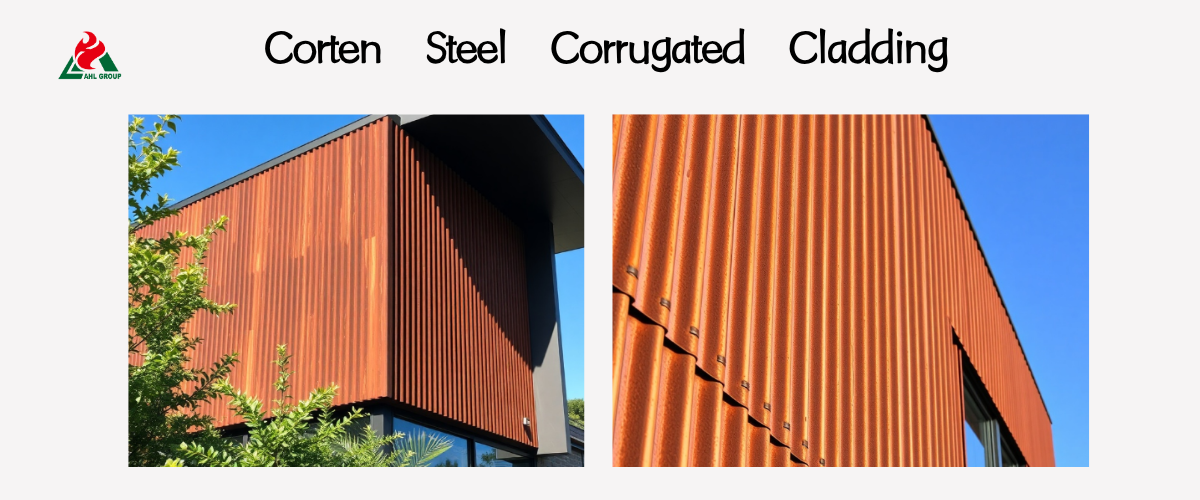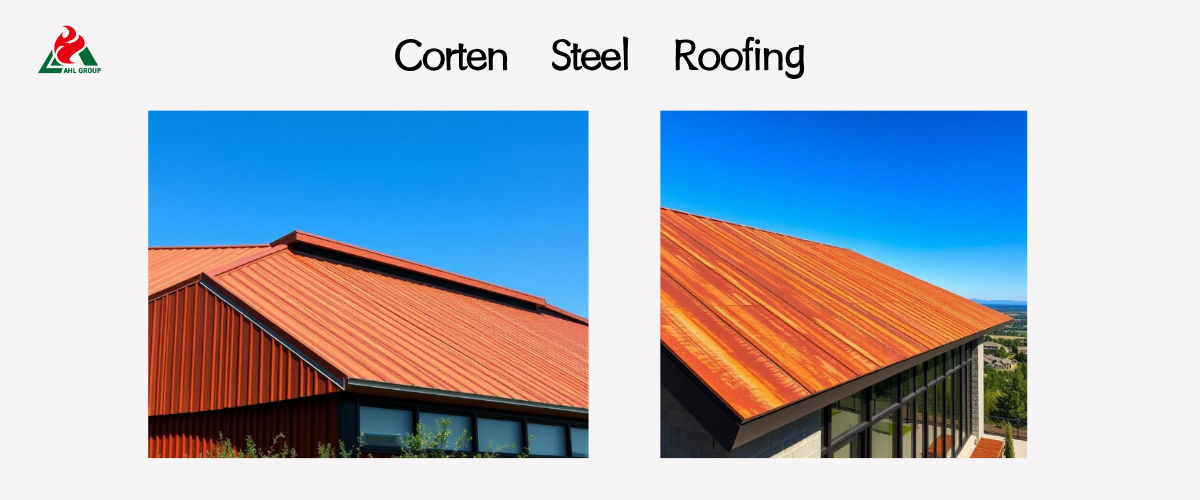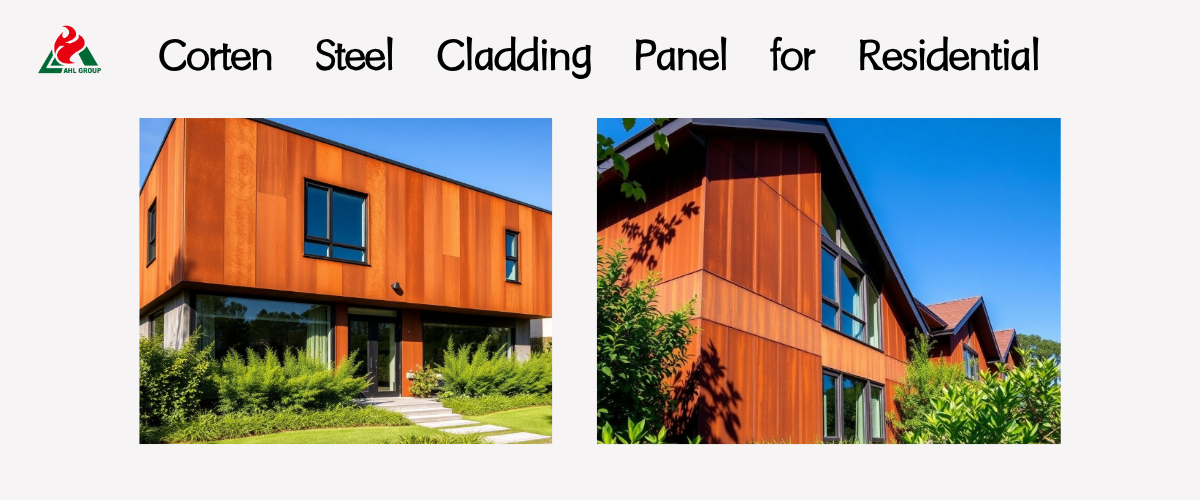The selection of exterior cladding represents the most critical decision affecting a building's lifespan, aesthetic appeal, and overall thermal performance. While weathering steel (Corten steel) is often chosen for its dramatic patina effect, its true value lies in its engineering properties: it functions as a high-performance weather barrier system, providing decades of maintenance-free protection for underlying structures. Unlike traditional systems reliant on paints, coatings, or sealants—materials that degrade over time — Corten steel cladding achieves self-sealing protection through a precisely controlled corrosion mechanism. This AHL Group guide details the technical principles behind weathering steel's superior environmental shielding.


Protective Properties of Corten Steel Cladding
Weathering steel's unique ability to serve as a permanent weather barrier in construction stems entirely from its metallurgical composition.
How the Rust Layer Forms a Weather Barrier
Weathering steel achieves protection by forming a glaze—a stable, dense layer of iron oxide (primarily goethite and magnetite) that develops as the steel undergoes repeated wet-dry cycles. Unlike the porous, flaking rust layers of ordinary steel, the weathering steel glaze features a compact, fine-grained structure firmly bonded to the substrate. Crucially, alloying elements like copper, nickel, and chromium in weathering steel prevent the iron oxide layer from flaking off. This stable protective layer acts as an impermeable barrier, drastically reducing further oxidation rates to near zero. It is precisely this self-sealing mechanism that classifies Corten steel as “weathering steel.”
Corten Steel vs. Conventional Weatherproofing Methods
Traditional building envelopes typically rely solely on a single protective layer, such as painted exterior walls or stucco coatings, requiring regular maintenance and recoating every 5-15 years.
► Conventional Approach: Depends on surface coatings; susceptible to scratches, UV degradation, and cracking, necessitating ongoing maintenance costs.
► Corten Cladding: Protection inherent to the material itself. Forms a continuous, self-healing barrier requiring no painting, sealing, or chemical treatments, delivering a truly zero-maintenance exterior wall solution.

How Corten Cladding Shields Buildings from Elements
Corten steel is not a single protective element; when properly installed according to AHL Group engineers' recommendations, it functions within a rain screen system to provide comprehensive multi-layer protection.
Protective Mechanism 1: Moisture Barrier
As the primary external layer of the rain screen assembly, the Corten steel siding is designed to channel most of the accumulated water (rainwater, snowmelt) from the building facade.
Rainwater, Snowmelt, and Moisture Defense
The core objective of Corten steel rain screens is to prevent moisture penetration into building structures. Its oxide layer effectively repels water, while the design ensures any moisture infiltrating the surface layer due to wind or capillary action is trapped by the internal air gap and drainage layer (secondary barrier). This prevents contact with insulation or structural components, effectively resisting high-intensity moisture intrusion.
Protection Mechanism 2: Thermal Performance
Despite the high thermal conductivity of weathering steel itself, its application in curtain wall systems effectively enhances energy efficiency.
Thermal Reflection and Insulation Properties
The ventilated air cavity behind the weathering steel cladding is crucial. During warm seasons, this gap allows solar heat absorbed by the dark rust layer to dissipate through convection, reducing the thermal load transferred to the building envelope. During cold seasons, the air cavity acts as an insulating layer, minimizing heat loss. The weathering steel layer serves as a durable outer protective layer, maintaining the integrity of the thermal components.
Protection Mechanism 3: Structural Durability
Weathering steel's strength and toughness far exceed those of most common metal cladding materials, providing exceptional structural protection.
Wind Pressure Resistance, Impact Resistance, and Wear Resistance
With a yield strength of up to 345 MPa, Corten steel cladding panels withstand extreme wind pressures without buckling or deformation. Its inherent toughness effectively resists accidental impacts (hail, debris) and intentional vandalism (graffiti typically wipes off easily without damaging the rust patina). This durability is crucial for long-term protection, particularly in high-traffic areas or hurricane-prone regions.
Protection Mechanism 4: Environmental Resistance
Weathering steel withstands corrosive and destructive environmental factors that cause other materials to deteriorate.
UV, Pollution, and Chemical Protection
Unlike plastics, composites, and coatings, the rust layer formed on weathering steel is fully UV-stable—it does not fade, chalk, or become brittle under prolonged exposure to sunlight. It performs exceptionally well in industrial environments with sulfur-containing pollutants, as sulfides actually promote the formation of a more stable protective rust layer. This makes weathering steel an ideal choice for urban centers with high concentrations of air pollutants.

Installation for Optimal Weather Protection
The effectiveness of Corten steel as a weather barrier is directly proportional to the quality of its installation within the rain screen system.
Rain Screen System Design Principles
For optimal performance, Corten steel panels must be installed over an air cavity with drainage and ventilation capabilities. This cavity, typically 25mm to 50mm (1 to 2 inches) deep, serves three critical functions:
► Pressure Equalization: Minimizes wind-driven water penetration.
► Drainage: Directs water breaching the outer layer to the bottom drainage outlets.
► Ventilation: Ensures air circulation to dry moisture and prevent condensation buildup, thereby protecting the structural wall.
Flashings and Waterproofing Details
All joints, connections, and penetration points (such as doors and windows) require meticulous flashing treatment. AHL Group designs typically incorporate concealed fasteners and specialized drip edge construction to ensure rainwater is directed away from the building, preventing contamination of adjacent surfaces—a common aesthetic concern with weathering steel. Proper waterproofing details are critical to the system's longevity.
Ventilation and Drainage Requirements
Adequate ventilation openings (at the top and bottom of the cladding system) must be maintained to ensure continuous airflow. This keeps the air cavity dry and facilitates effective cycling between wet and dry conditions for the weathering steel patina, which is critical for forming a stable rust layer.
Maintenance and Long-Term Performance
The core advantage of weathering steel lies in its maintenance-free nature; however, the focus of “maintenance” has shifted from material upkeep to system inspection.
Monitoring Weather Protection Performance
Owners should conduct visual inspections every six months, including:
► Checking whether drainage holes at the bottom of the rain screen are blocked (debris, fallen leaves)
► Ensuring ventilation gaps remain unobstructed
If excessive water accumulation or staining occurs, re-examine the flashing details.
Addressing Potential Climate-Related Issues
True material failure is extremely rare. The most common “issue” is localized staining on adjacent concrete or masonry. This can be resolved by applying a specialized sealant to water-collecting areas on the back of Corten panels during installation, or by ensuring adequate gravel bedding or drainage pipes beneath the curtain wall. Structural problems typically stem from installation defects rather than the material itself.
Ensuring Decades of Protection
With minimal maintenance of the surrounding drainage system, a properly installed weathering steel siding panel system delivers exceptional structural and weather protection. Its lifespan easily exceeds 50 years, covering the entire building's lifecycle.

Frequently Asked Questions About Corten Cladding
Q: Does Corten Steel require additional waterproofing?
No. The weathering steel facade itself does not require surface sealing or painting. However, since this facade functions as a rain screen system rather than an integral waterproofing material, the underlying wall structure must be waterproofed (typically using a weather-resistant barrier WRB).
Q: How Does It Perform in Coastal Environments?
Weathering steel is generally not recommended within 2 miles (3.2 km) of seawater, as high chloride ion levels in the air inhibit the formation of a stable rust patina. Salt disrupts the natural wet/dry cycle, leading to persistent destructive corrosion rather than protective rust formation. Pre-oxidized finishes or specialized coatings are required in such environments.
Q: How Does Thermal Expansion/Contraction Get Addressed?
Like all metals, weathering steel expands and contracts with temperature changes. AHL Group employs panel connection systems—such as Z-clips or concealed fasteners—that allow panels to float slightly. This accommodates thermal movement while preventing stress on fasteners or panel distortion. Such design details are critical for maintaining structural integrity and preventing joint leakage.
Conclusion: Define Your Urban Landscape with Corten Steel Curtain Walls
Corten steel cladding wall offers a unique and superior solution for building envelopes, transforming external weather erosion from a threat into an aesthetic advantage. By forming a dense, self-healing rust layer and serving as the robust outer layer of a ventilated rain screen system, Corten steel provides long-term resistance to moisture, thermal cycling, and environmental pollutants. For clients seeking permanently maintenance-free, structurally resilient facades, AHL Group's weathering steel cladding systems represent the ultimate investment in enduring architectural protection.


